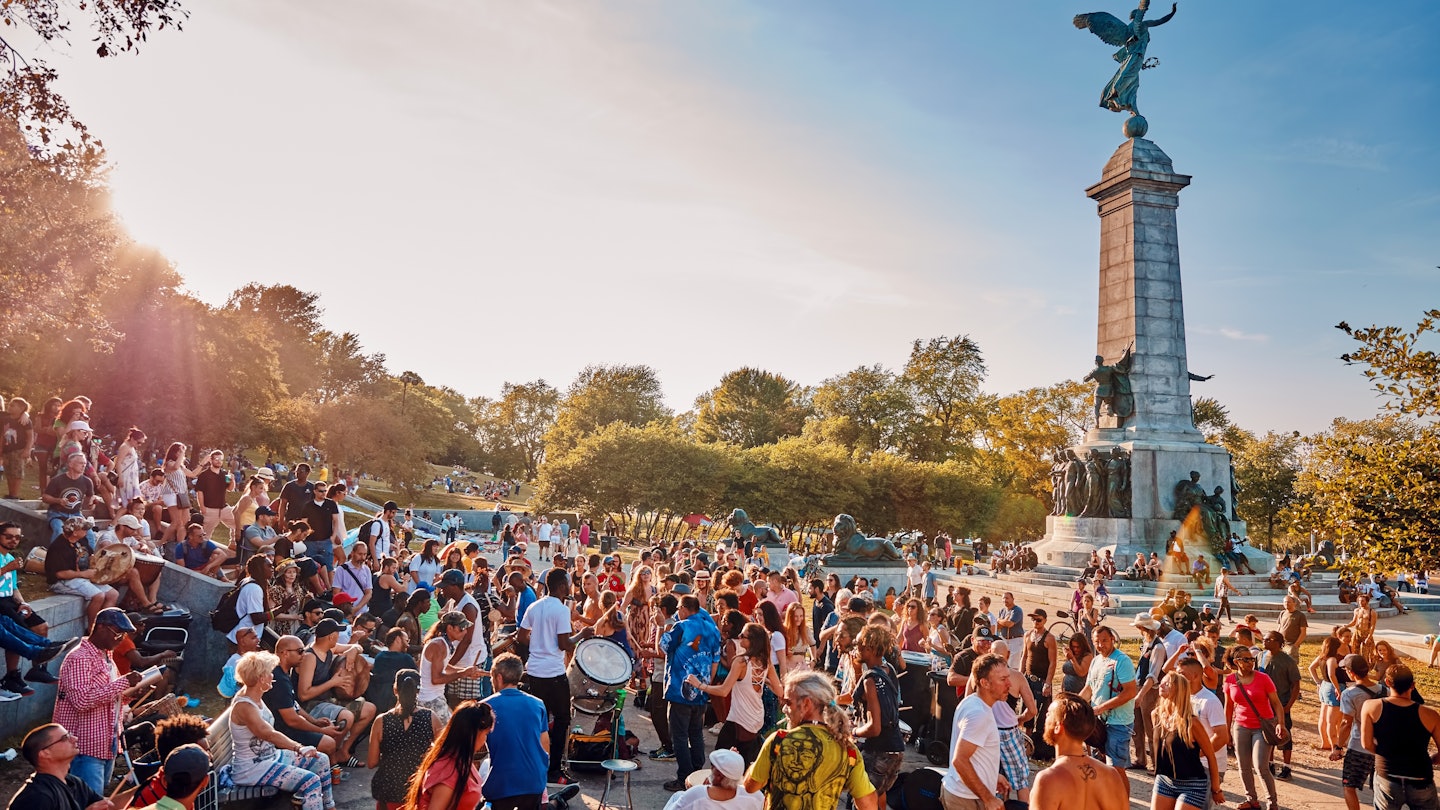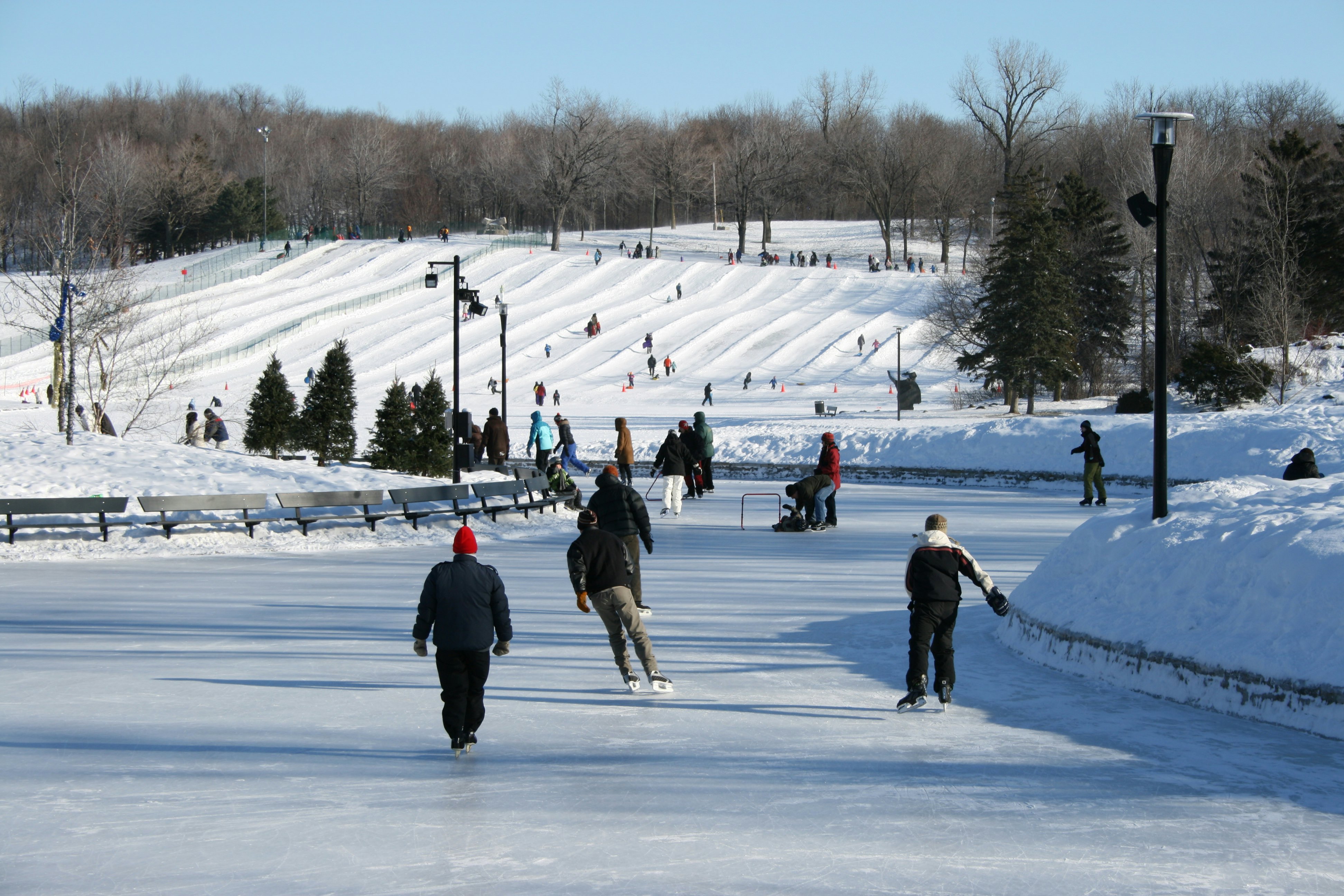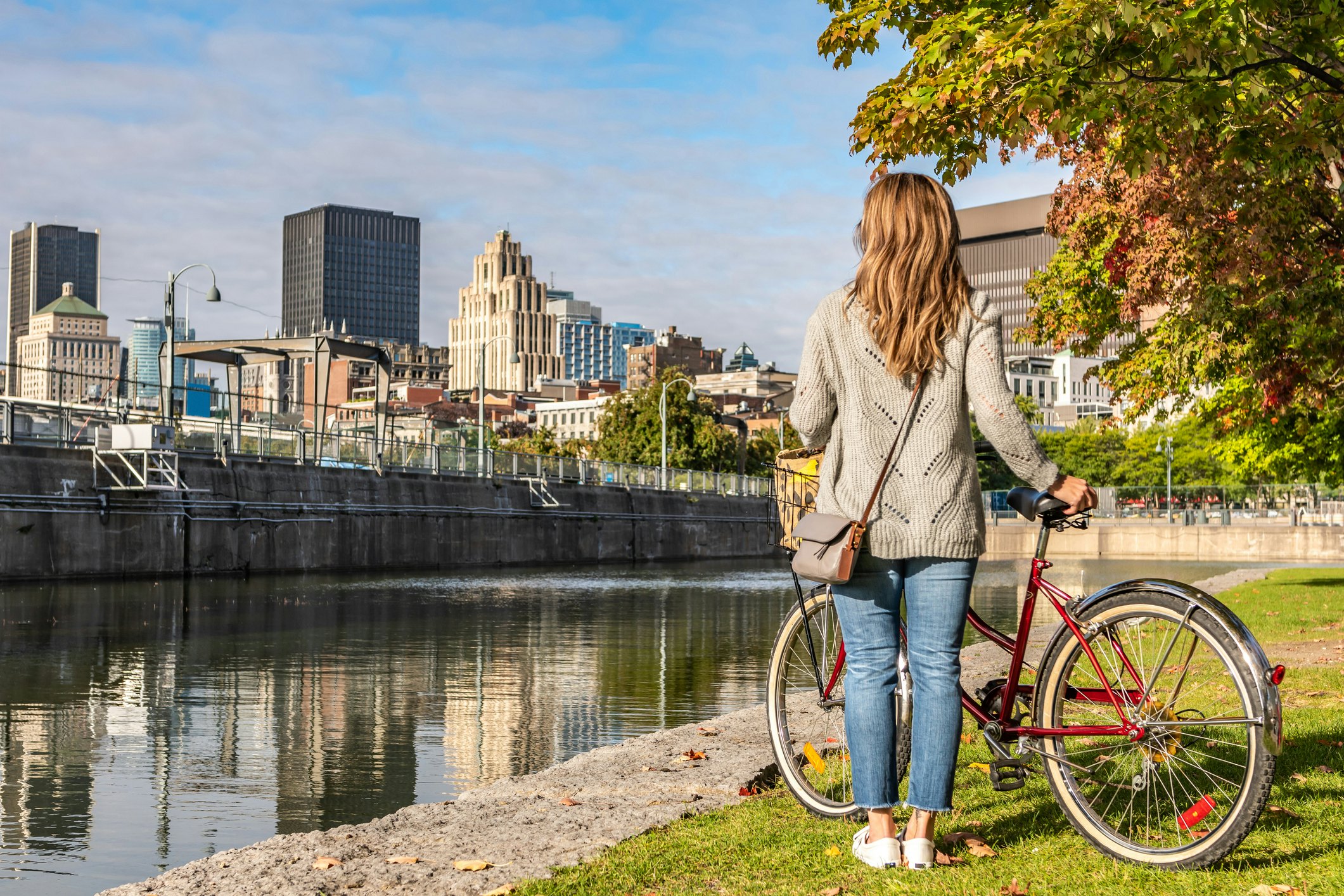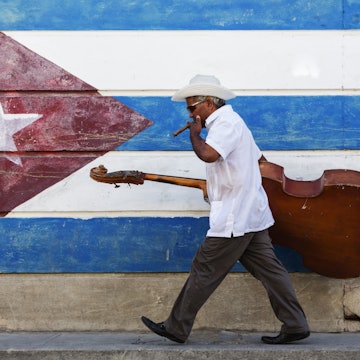

The summer sunshine brings the party to Montréal. Shutterstock
A vibrant mashup of styles, Montréal has both Parisian-style bakeries and cutting-edge arts events. You could spend weeks exploring the city’s many layers, with 18th-century architecture, canal-side trails and hilltop overlooks all woven into the urban landscape.
Most people think only of summer when planning a trip to Montréal, but there’s really no bad time to visit (as long as you pack knitwear in winter). The city has an abundance of activities and festivals all year round, and visiting outside of the busy summer season will help you beat the crowds and enjoy substantial savings on accommodation.
Plan the perfect time for your visit with our seasonal guide to magnificent Montréal.
June to August is the best time for outdoor festivals
The summer brings an undeniable current of joie de vivre to the streets of Montréal with a packed lineup of outdoor concerts and other big events.
Going strong for more than 40 years, the Festival International de Jazz de Montréal draws music lovers from around the globe to see some 600-plus concerts — over half of which are free. Also kicking off in June, the Mural Festival sees top graffiti artists transform blank walls around town into brilliant works of art. Dance parties add to the fun.
Montréal’s multicultural community is celebrated at gatherings like the Festival International Nuits d’Afrique in July, representing over 30 countries from Africa, Latin America and the Caribbean. August heralds the Korean street food fest of Pocha MTL, the outdoor EDM celebration of Ile Soniq and the rock-loving Osheaga — staging some of the world’s top performers.
Music and revelry aside, the summer is the best time to be out and about, and you can spend your day hopping between outdoor cafes or watching the sunset at rooftop bars like the Terrasse Place d’Armes and Terrasse William Gray.
For a more active experience in Montréal, head to the Old Port to zip line through the air, take the kids on a challenging ropes course or head off on a jet boating adventure on the St Lawrence. The Old Port is also a great starting point for a spin along the Canal de Lachine. You can hire a bike at Ça Roule and pedal out to the Atwater market, the perfect spot for a picnic, and keep going all the way out to Parc René Lévesque (a lovely 15km/9.3-mile ride) if so inclined.
There’s more kid-themed fun at La Ronde, an amusement park on the Île Sainte-Hélène opposite Old Montréal. On various nights over the summer, the park shoots off fireworks during the L'International des Feux Loto-Québec. The view is best from the park grandstands, though you can see the fiery display in other parts of Montréal as well.

September to November is the best time to see autumn colors
You needn’t trek into the wilderness to see leaves painted gold, crimson and orange during the fall. Montréal’s parks and tree-lined neighborhoods offer enviable photo ops of nature’s finery from late September to early November, with peak colors typically arriving around mid-October.
Head up to the Parc du Mont-Royal to walk the wooded trails and take in the views from the Belvédère Kondiaronk over the lower slopes of the mountain against the backdrop of downtown’s glass and steel high-rises. Other prime spots for leaf peeping are in the riverside forests of Parc Jean-Drapeau, the lookout from the Oratoire St-Joseph and in tree-lined neighborhood parks like the Carré St Louis in the Plateau.
By day, the changing leaves make a cinematic backdrop to the Jardin Botanique de Montréal. In the evening, the botanical gardens become even more dramatic during Gardens of Light, when colorful lanterns transform the tree-lined ponds and thematic gardens into colorful works of art. The immersive event runs from August 30th to the end of October.

December to March is the best time for winter activities
When the temperature plummets, most Montréalers don’t hibernate. Instead, they take advantage of the snow (and even the ice!) that transforms their city into a wintery landscape. They know how to dress for the cold, and you should follow suit. Parc du Mont-Royal becomes the epicenter of outdoor fun, with cross-country ski trails and ungroomed snowshoe trails lacing through the serene forests. There’s also ice skating and sledding near Lac aux Castors. Access is free, and you can rent gear from the Pavilion du Lac aux Castors, which also has a cafe that serves up hot chocolate.
Parc Jean-Drapeau is another big draw for winter fans. There’s skating, cross-country skiing, snowshoeing and sledding as well as fat biking. The oval skating rink yields fine views of the city across the water, and the wooded paths make a pleasant escape from the city.
Elsewhere, the ponds of neighborhood parks become gathering spots for ice skating. The winding waterway in Parc La Fontaine is a favorite among residents of the Plateau, while Mile Enders flock to Parc Saint-Viateur. Downtown hosts its own ice rink, the newish Esplanade Tranquille, which is lit with colorful projections as music plays overhead. This rink is also free, and there are skate rentals and a two-floor indoor area where you can watch the action while warming up by the fire. If you’re staying in Old Montréal, you can stroll over to the Old Port for ice skating action on (not free) Patin Patin at the foot of the slowly spinning Grand Roue.
A number of big events happen in winter. If you come in December, you can catch the Village de Noël held in front of the Atwater Market. Dozens of artisans and producers from around Québec sell their wares at this Christmas market, and there are also special family events like caroling and a parade.
From late January to mid-February, the Old Port stages Igloofest. Proudly proclaiming itself to be "the coldest music festival in the world," the event features DJ-fueled dance parties outdoors. Laser lights and pyrotechnics in the frosty air add to the surreal atmosphere. Later in February, downtown transforms into an outdoor arts hub during Montréal en Lumiere, with concerts, dance performances and light installations. It overlaps with Nuit Blanche, with yet more cultural events packing an arts-filled night that lasts until dawn.

April to May is the best time to visit museums and see springtime flowers
Winter can seem neverending so when the first blue petals of the Siberian Squill appear in early April, the city welcomes spring with open (and bare) arms — never mind that there’s probably still snow on the ground. Montréalers enjoy leisurely strolls in the warm(er) weather, gather at outdoor pubs and once again pedal their way around town. Bixi, the city’s bike-sharing network emerges from winter slumber in mid-April, when over 10,000 bikes scattered at 865 stations around Montréal are placed back on the streets for easy hire.
In late April, bibliophiles descend on Montréal during the Blue Metropolis International Literary Festival. You can attend readings by poets, novelists and historians, or take part in workshops, literary walks and dozens of other events. The last Sunday in May is Montréal Museums Day when many museums around town offer free admission and host special arts events. That’s also around the time when Parc Jean-Drapeau stages the three-day Eureka! Festival, a free outdoor science fair with hands-on activities for kids.














